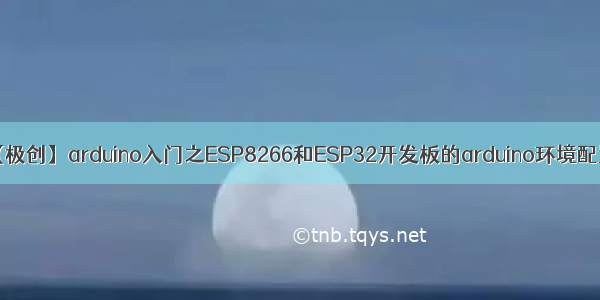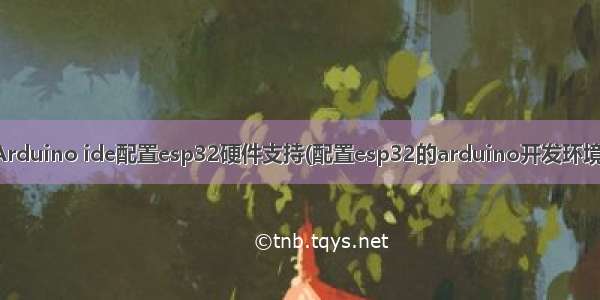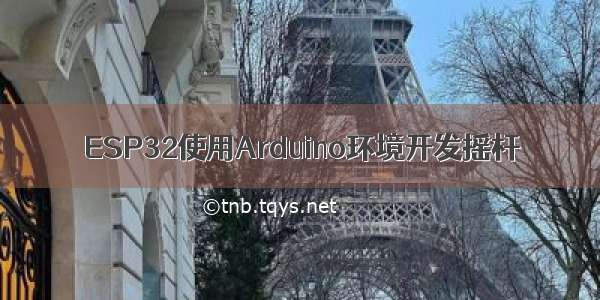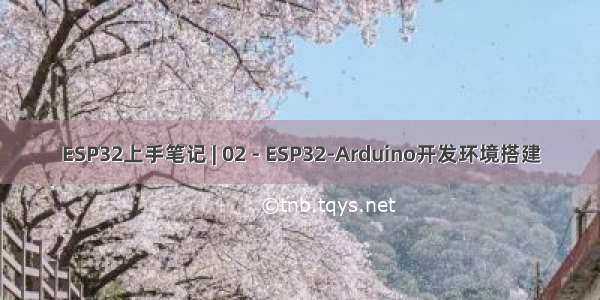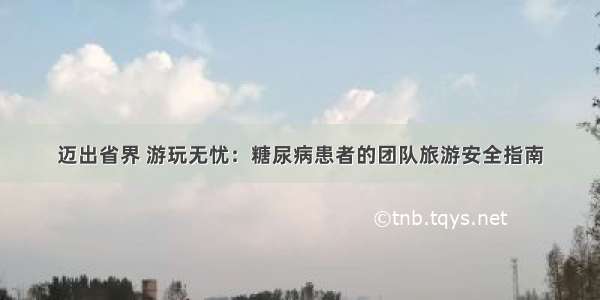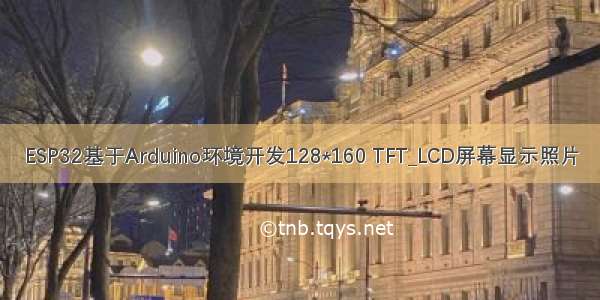
图片生成.c文件
注意修改变量名和大小 然后替换大括号内的内容
TFT_eSPI的配置文件
// USER DEFINED SETTINGS// Set driver type, fonts to be loaded, pins used and SPI control method etc//// See the User_Setup_Select.h file if you wish to be able to define multiple// setups and then easily select which setup file is used by the compiler.//// If this file is edited correctly then all the library example sketches should// run without the need to make any more changes for a particular hardware setup!// Note that some sketches are designed for a particular TFT pixel width/height// User defined information reported by "Read_User_Setup" test & diagnostics example#define USER_SETUP_INFO "User_Setup"// Define to disable all #warnings in library (can be put in User_Setup_Select.h)//#define DISABLE_ALL_LIBRARY_WARNINGS// ##################################################################################//// Section 1. Call up the right driver file and any options for it//// ##################################################################################// Define STM32 to invoke optimised processor support (only for STM32)//#define STM32// Defining the STM32 board allows the library to optimise the performance// for UNO compatible "MCUfriend" style shields//#define NUCLEO_64_TFT//#define NUCLEO_144_TFT// STM32 8 bit parallel only:// If STN32 Port A or B pins 0-7 are used for 8 bit parallel data bus bits 0-7// then this will improve rendering performance by a factor of ~8x//#define STM_PORTA_DATA_BUS//#define STM_PORTB_DATA_BUS// Tell the library to use parallel mode (otherwise SPI is assumed)//#define TFT_PARALLEL_8_BIT//#defined TFT_PARALLEL_16_BIT // **** 16 bit parallel ONLY for RP2040 processor ****// Display type - only define if RPi display//#define RPI_DISPLAY_TYPE // 20MHz maximum SPI// Only define one driver, the other ones must be commented out//#define ILI9341_DRIVER // Generic driver for common displays//#define ILI9341_2_DRIVER// Alternative ILI9341 driver, see /Bodmer/TFT_eSPI/issues/1172#define ST7735_DRIVER// Define additional parameters below for this display//#define ILI9163_DRIVER// Define additional parameters below for this display//#define S6D02A1_DRIVER//#define RPI_ILI9486_DRIVER // 20MHz maximum SPI//#define HX8357D_DRIVER//#define ILI9481_DRIVER//#define ILI9486_DRIVER//#define ILI9488_DRIVER// WARNING: Do not connect ILI9488 display SDO to MISO if other devices share the SPI bus (TFT SDO does NOT tristate when CS is high)//#define ST7789_DRIVER// Full configuration option, define additional parameters below for this display//#define ST7789_2_DRIVER // Minimal configuration option, define additional parameters below for this display//#define R61581_DRIVER//#define RM68140_DRIVER//#define ST7796_DRIVER//#define SSD1351_DRIVER//#define SSD1963_480_DRIVER//#define SSD1963_800_DRIVER//#define SSD1963_800ALT_DRIVER//#define ILI9225_DRIVER//#define GC9A01_DRIVER// Some displays support SPI reads via the MISO pin, other displays have a single// bi-directional SDA pin and the library will try to read this via the MOSI line.// To use the SDA line for reading data from the TFT uncomment the following line:// #define TFT_SDA_READ// This option is for ESP32 ONLY, tested with ST7789 and GC9A01 display only// For ST7735, ST7789 and ILI9341 ONLY, define the colour order IF the blue and red are swapped on your display// Try ONE option at a time to find the correct colour order for your display// #define TFT_RGB_ORDER TFT_RGB // Colour order Red-Green-Blue#define TFT_RGB_ORDER TFT_BGR // Colour order Blue-Green-Red// For M5Stack ESP32 module with integrated ILI9341 display ONLY, remove // in line below// #define M5STACK// For ST7789, ST7735, ILI9163 and GC9A01 ONLY, define the pixel width and height in portrait orientation// #define TFT_WIDTH 80#define TFT_WIDTH 128// #define TFT_WIDTH 172 // ST7789 172 x 320// #define TFT_WIDTH 240 // ST7789 240 x 240 and 240 x 320#define TFT_HEIGHT 160// #define TFT_HEIGHT 128// #define TFT_HEIGHT 240 // ST7789 240 x 240// #define TFT_HEIGHT 320 // ST7789 240 x 320// #define TFT_HEIGHT 240 // GC9A01 240 x 240// For ST7735 ONLY, define the type of display, originally this was based on the// colour of the tab on the screen protector film but this is not always true, so try// out the different options below if the screen does not display graphics correctly,// e.g. colours wrong, mirror images, or stray pixels at the edges.// Comment out ALL BUT ONE of these options for a ST7735 display driver, save this// this User_Setup file, then rebuild and upload the sketch to the board again:// #define ST7735_INITB// #define ST7735_GREENTAB// #define ST7735_GREENTAB2//#define ST7735_GREENTAB3// #define ST7735_GREENTAB128 // For 128 x 128 display// #define ST7735_GREENTAB160x80 // For 160 x 80 display (BGR, inverted, 26 offset)// #define ST7735_REDTAB// #define ST7735_BLACKTAB// #define ST7735_REDTAB160x80 // For 160 x 80 display with 24 pixel offset// If colours are inverted (white shows as black) then uncomment one of the next// 2 lines try both options, one of the options should correct the inversion.// #define TFT_INVERSION_ON// #define TFT_INVERSION_OFF// ##################################################################################//// Section 2. Define the pins that are used to interface with the display here//// ##################################################################################// If a backlight control signal is available then define the TFT_BL pin in Section 2// below. The backlight will be turned ON when tft.begin() is called, but the library// needs to know if the LEDs are ON with the pin HIGH or LOW. If the LEDs are to be// driven with a PWM signal or turned OFF/ON then this must be handled by the user// sketch. e.g. with digitalWrite(TFT_BL, LOW);// #define TFT_BL 32 // LED back-light control pin// #define TFT_BACKLIGHT_ON HIGH // Level to turn ON back-light (HIGH or LOW)// We must use hardware SPI, a minimum of 3 GPIO pins is needed.// Typical setup for ESP8266 NodeMCU ESP-12 is ://// Display SDO/MISO to NodeMCU pin D6 (or leave disconnected if not reading TFT)// Display LED to NodeMCU pin VIN (or 5V, see below)// Display SCK to NodeMCU pin D5// Display SDI/MOSI to NodeMCU pin D7// Display DC (RS/AO)to NodeMCU pin D3// Display RESETto NodeMCU pin D4 (or RST, see below)// Display CS to NodeMCU pin D8 (or GND, see below)// Display GND to NodeMCU pin GND (0V)// Display VCC to NodeMCU 5V or 3.3V//// The TFT RESET pin can be connected to the NodeMCU RST pin or 3.3V to free up a control pin//// The DC (Data Command) pin may be labelled AO or RS (Register Select)//// With some displays such as the ILI9341 the TFT CS pin can be connected to GND if no more// SPI devices (e.g. an SD Card) are connected, in this case comment out the #define TFT_CS// line below so it is NOT defined. Other displays such at the ST7735 require the TFT CS pin// to be toggled during setup, so in these cases the TFT_CS line must be defined and connected.//// The NodeMCU D0 pin can be used for RST////// Note: only some versions of the NodeMCU provide the USB 5V on the VIN pin// If 5V is not available at a pin you can use 3.3V but backlight brightness// will be lower.// ###### EDIT THE PIN NUMBERS IN THE LINES FOLLOWING TO SUIT YOUR ESP8266 SETUP ######// For NodeMCU - use pin numbers in the form PIN_Dx where Dx is the NodeMCU pin designation//#define TFT_CS PIN_D8 // Chip select control pin D8//#define TFT_DC PIN_D3 // Data Command control pin//#define TFT_RST PIN_D4 // Reset pin (could connect to NodeMCU RST, see next line)//#define TFT_RST -1 // Set TFT_RST to -1 if the display RESET is connected to NodeMCU RST or 3.3V//#define TFT_BL PIN_D1 // LED back-light (only for ST7789 with backlight control pin)//#define TOUCH_CS PIN_D2// Chip select pin (T_CS) of touch screen//#define TFT_WR PIN_D2 // Write strobe for modified Raspberry Pi TFT only// ###### FOR ESP8266 OVERLAP MODE EDIT THE PIN NUMBERS IN THE FOLLOWING LINES ######// Overlap mode shares the ESP8266 FLASH SPI bus with the TFT so has a performance impact// but saves pins for other functions. It is best not to connect MISO as some displays// do not tristate that line when chip select is high!// Note: Only one SPI device can share the FLASH SPI lines, so a SPI touch controller// cannot be connected as well to the same SPI signals.// On NodeMCU 1.0 SD0=MISO, SD1=MOSI, CLK=SCLK to connect to TFT in overlap mode// On NodeMCU V3 S0 =MISO, S1 =MOSI, S2 =SCLK// In ESP8266 overlap mode the following must be defined//#define TFT_SPI_OVERLAP// In ESP8266 overlap mode the TFT chip select MUST connect to pin D3//#define TFT_CS PIN_D3//#define TFT_DC PIN_D5 // Data Command control pin//#define TFT_RST PIN_D4 // Reset pin (could connect to NodeMCU RST, see next line)//#define TFT_RST -1 // Set TFT_RST to -1 if the display RESET is connected to NodeMCU RST or 3.3V// ###### EDIT THE PIN NUMBERS IN THE LINES FOLLOWING TO SUIT YOUR ESP32 SETUP ######// For ESP32 Dev board (only tested with ILI9341 display)// The hardware SPI can be mapped to any pins//#define TFT_MISO 19//#define TFT_MOSI 23//#define TFT_SCLK 18//#define TFT_CS 15 // Chip select control pin//#define TFT_DC 2 // Data Command control pin//#define TFT_RST 4 // Reset pin (could connect to RST pin)//#define TFT_RST -1 // Set TFT_RST to -1 if display RESET is connected to ESP32 board RST// For ESP32 Dev board (only tested with GC9A01 display)// The hardware SPI can be mapped to any pins#define TFT_MISO 19 //未接线#define TFT_MOSI 23 // SDA D23#define TFT_SCLK 18 // SCL D18#define TFT_CS 27 // CS D27#define TFT_DC 25 // DC D25#define TFT_RST 26 // RES D26//#define TFT_MOSI 15 // In some display driver board, it might be written as "SDA" and so on.//#define TFT_SCLK 14//#define TFT_CS 5 // Chip select control pin//#define TFT_DC 27 // Data Command control pin//#define TFT_RST 33 // Reset pin (could connect to Arduino RESET pin)//#define TFT_BL 22 // LED back-light//#define TOUCH_CS 21// Chip select pin (T_CS) of touch screen//#define TFT_WR 22 // Write strobe for modified Raspberry Pi TFT only// For the M5Stack module use these #define lines//#define TFT_MISO 19//#define TFT_MOSI 23//#define TFT_SCLK 18//#define TFT_CS 14 // Chip select control pin//#define TFT_DC 27 // Data Command control pin//#define TFT_RST 33 // Reset pin (could connect to Arduino RESET pin)//#define TFT_BL 32 // LED back-light (required for M5Stack)// ###### EDIT THE PINs BELOW TO SUIT YOUR ESP32 PARALLEL TFT SETUP ######// The library supports 8 bit parallel TFTs with the ESP32, the pin// selection below is compatible with ESP32 boards in UNO format.// Wemos D32 boards need to be modified, see diagram in Tools folder.// Only ILI9481 and ILI9341 based displays have been tested!// Parallel bus is only supported for the STM32 and ESP32// Example below is for ESP32 Parallel interface with UNO displays// Tell the library to use 8 bit parallel mode (otherwise SPI is assumed)//#define TFT_PARALLEL_8_BIT// The ESP32 and TFT the pins used for testing are://#define TFT_CS 33 // Chip select control pin (library pulls permanently low//#define TFT_DC 15 // Data Command control pin - must use a pin in the range 0-31//#define TFT_RST 32 // Reset pin, toggles on startup//#define TFT_WR 4 // Write strobe control pin - must use a pin in the range 0-31//#define TFT_RD 2 // Read strobe control pin//#define TFT_D0 12 // Must use pins in the range 0-31 for the data bus//#define TFT_D1 13 // so a single register write sets/clears all bits.//#define TFT_D2 26 // Pins can be randomly assigned, this does not affect//#define TFT_D3 25 // TFT screen update performance.//#define TFT_D4 17//#define TFT_D5 16//#define TFT_D6 27//#define TFT_D7 14// ###### EDIT THE PINs BELOW TO SUIT YOUR STM32 SPI TFT SETUP ######// The TFT can be connected to SPI port 1 or 2//#define TFT_SPI_PORT 1 // SPI port 1 maximum clock rate is 55MHz//#define TFT_MOSI PA7//#define TFT_MISO PA6//#define TFT_SCLK PA5//#define TFT_SPI_PORT 2 // SPI port 2 maximum clock rate is 27MHz//#define TFT_MOSI PB15//#define TFT_MISO PB14//#define TFT_SCLK PB13// Can use Ardiuno pin references, arbitrary allocation, TFT_eSPI controls chip select//#define TFT_CS D5 // Chip select control pin to TFT CS//#define TFT_DC D6 // Data Command control pin to TFT DC (may be labelled RS = Register Select)//#define TFT_RST D7 // Reset pin to TFT RST (or RESET)// OR alternatively, we can use STM32 port reference names PXnn//#define TFT_CS PE11 // Nucleo-F767ZI equivalent of D5//#define TFT_DC PE9 // Nucleo-F767ZI equivalent of D6//#define TFT_RST PF13 // Nucleo-F767ZI equivalent of D7//#define TFT_RST -1 // Set TFT_RST to -1 if the display RESET is connected to processor reset// Use an Arduino pin for initial testing as connecting to processor reset// may not work (pulse too short at power up?)// ##################################################################################//// Section 3. Define the fonts that are to be used here//// ##################################################################################// Comment out the #defines below with // to stop that font being loaded// The ESP8366 and ESP32 have plenty of memory so commenting out fonts is not// normally necessary. If all fonts are loaded the extra FLASH space required is// about 17Kbytes. To save FLASH space only enable the fonts you need!#define LOAD_GLCD // Font 1. Original Adafruit 8 pixel font needs ~1820 bytes in FLASH#define LOAD_FONT2 // Font 2. Small 16 pixel high font, needs ~3534 bytes in FLASH, 96 characters#define LOAD_FONT4 // Font 4. Medium 26 pixel high font, needs ~5848 bytes in FLASH, 96 characters#define LOAD_FONT6 // Font 6. Large 48 pixel font, needs ~2666 bytes in FLASH, only characters 1234567890:-.apm#define LOAD_FONT7 // Font 7. 7 segment 48 pixel font, needs ~2438 bytes in FLASH, only characters 1234567890:-.#define LOAD_FONT8 // Font 8. Large 75 pixel font needs ~3256 bytes in FLASH, only characters 1234567890:-.//#define LOAD_FONT8N // Font 8. Alternative to Font 8 above, slightly narrower, so 3 digits fit a 160 pixel TFT#define LOAD_GFXFF // FreeFonts. Include access to the 48 Adafruit_GFX free fonts FF1 to FF48 and custom fonts// Comment out the #define below to stop the SPIFFS filing system and smooth font code being loaded// this will save ~20kbytes of FLASH#define SMOOTH_FONT// ##################################################################################//// Section 4. Other options//// ##################################################################################// For RP2040 processor and SPI displays, uncomment the following line to use the PIO interface.//#define RP2040_PIO_SPI // Leave commented out to use standard RP2040 SPI port interface// For the RP2040 processor define the SPI port channel used (default 0 if undefined)//#define TFT_SPI_PORT 1 // Set to 0 if SPI0 pins are used, or 1 if spi1 pins used// For the STM32 processor define the SPI port channel used (default 1 if undefined)//#define TFT_SPI_PORT 2 // Set to 1 for SPI port 1, or 2 for SPI port 2// Define the SPI clock frequency, this affects the graphics rendering speed. Too// fast and the TFT driver will not keep up and display corruption appears.// With an ILI9341 display 40MHz works OK, 80MHz sometimes fails// With a ST7735 display more than 27MHz may not work (spurious pixels and lines)// With an ILI9163 display 27 MHz works OK.// #define SPI_FREQUENCY 1000000// #define SPI_FREQUENCY 5000000// #define SPI_FREQUENCY 10000000// #define SPI_FREQUENCY 20000000#define SPI_FREQUENCY 27000000// #define SPI_FREQUENCY 40000000// #define SPI_FREQUENCY 55000000 // STM32 SPI1 only (SPI2 maximum is 27MHz)// #define SPI_FREQUENCY 80000000// Optional reduced SPI frequency for reading TFT#define SPI_READ_FREQUENCY 20000000// The XPT2046 requires a lower SPI clock rate of 2.5MHz so we define that here:#define SPI_TOUCH_FREQUENCY 2500000// The ESP32 has 2 free SPI ports i.e. VSPI and HSPI, the VSPI is the default.// If the VSPI port is in use and pins are not accessible (e.g. TTGO T-Beam)// then uncomment the following line://#define USE_HSPI_PORT// Comment out the following #define if "SPI Transactions" do not need to be// supported. When commented out the code size will be smaller and sketches will// run slightly faster, so leave it commented out unless you need it!// Transaction support is needed to work with SD library but not needed with TFT_SdFat// Transaction support is required if other SPI devices are connected.// Transactions are automatically enabled by the library for an ESP32 (to use HAL mutex)// so changing it here has no effect// #define SUPPORT_TRANSACTIONS
代码
#include <SPI.h> //导入库#include <TFT_eSPI.h> //使用前先配置TFT_eSPI库//Picture.h const uint16_t p1[0x5000] PROGMEM 注意变量名 p1 程序要是使用的#include "./picture/Picture.h"TFT_eSPI tft = TFT_eSPI(); void setup() {// put your setup code here, to run once:tft.init();//初始化显示寄存器tft.setRotation(0);//横屏还是竖屏tft.fillScreen(TFT_WHITE);//屏幕颜色//图片颜色显示不正确 修改配置文件的//#define TFT_RGB_ORDER TFT_RGB // Colour order Red-Green-Blue//#define TFT_RGB_ORDER TFT_BGR // Colour order Blue-Green-Redtft.setSwapBytes(true); // RGB->BGR 加上这句才能正确显示颜色。tft.pushImage(0, 0, 128, 160, p1); //注意设置宽高参数}//显示多张照片 void loop() {// put your main code here, to run repeatedly:// tft.pushImage(0, 0, 120, 120, p2);// delay(50);// tft.pushImage(0, 0, 128, 128, p3);// delay(50);// tft.pushImage(0, 0, 128, 128, p4);// delay(50);// tft.pushImage(0, 0, 128, 128, p5);// delay(50);// tft.pushImage(0, 0, 128, 128, p6);// delay(2000);}
#include <pgmspace.h>// p1省略部分大括号代码内容 图片生成的数据直接替换即可const uint16_t p1[0x5000] PROGMEM ={0xE782, 0xE782, 0xE782, 0xE782, 0xE782, 0xE782, 0xE782, 0xE782, 0xE782, 0xE782, 0xE782, 0xE782, 0xE782, 0xE782, 0xE782, 0xE782, // 0x0010 (16)};
如果觉得《ESP32基于Arduino环境开发128*160 TFT_LCD屏幕显示照片》对你有帮助,请点赞、收藏,并留下你的观点哦!

